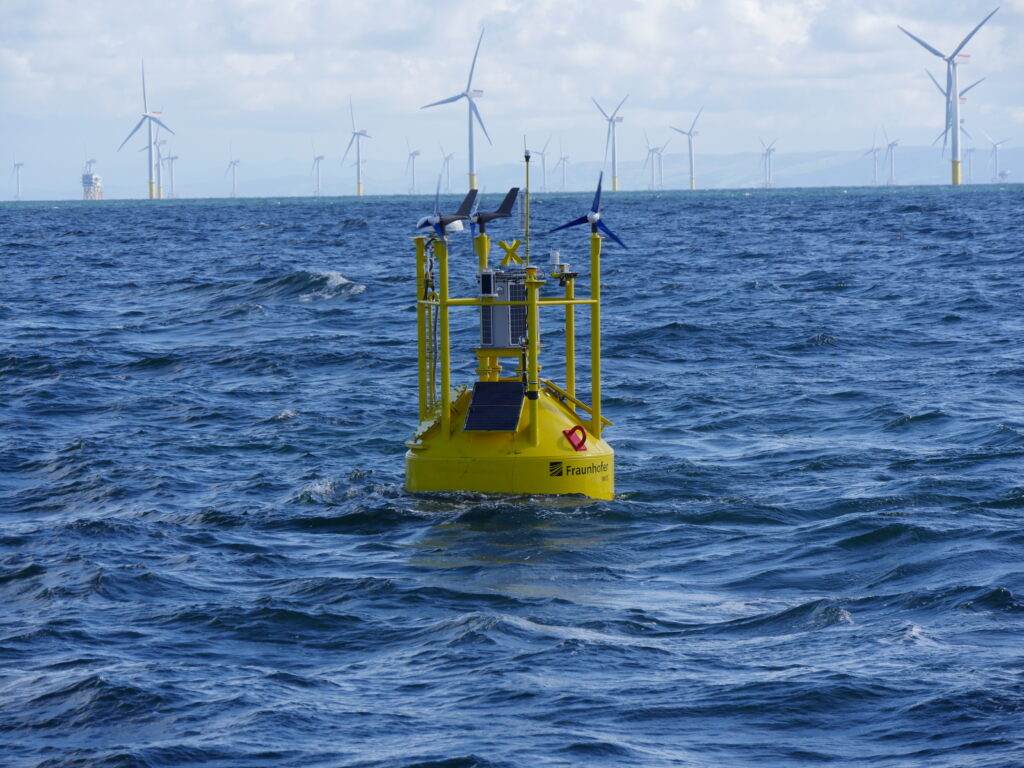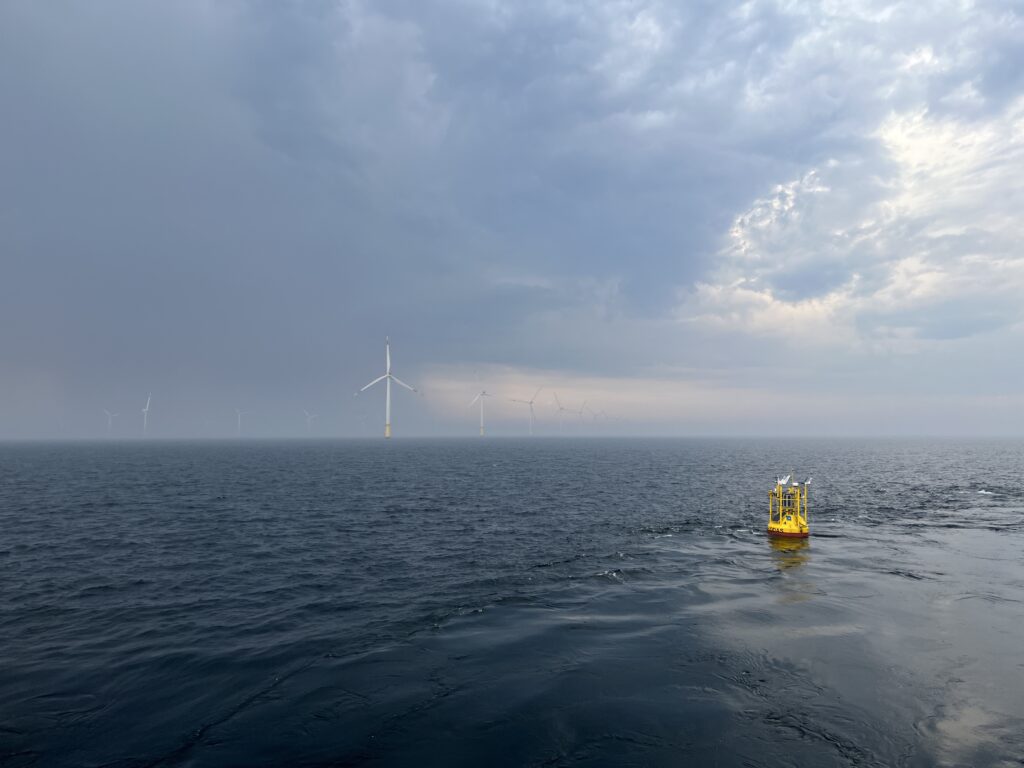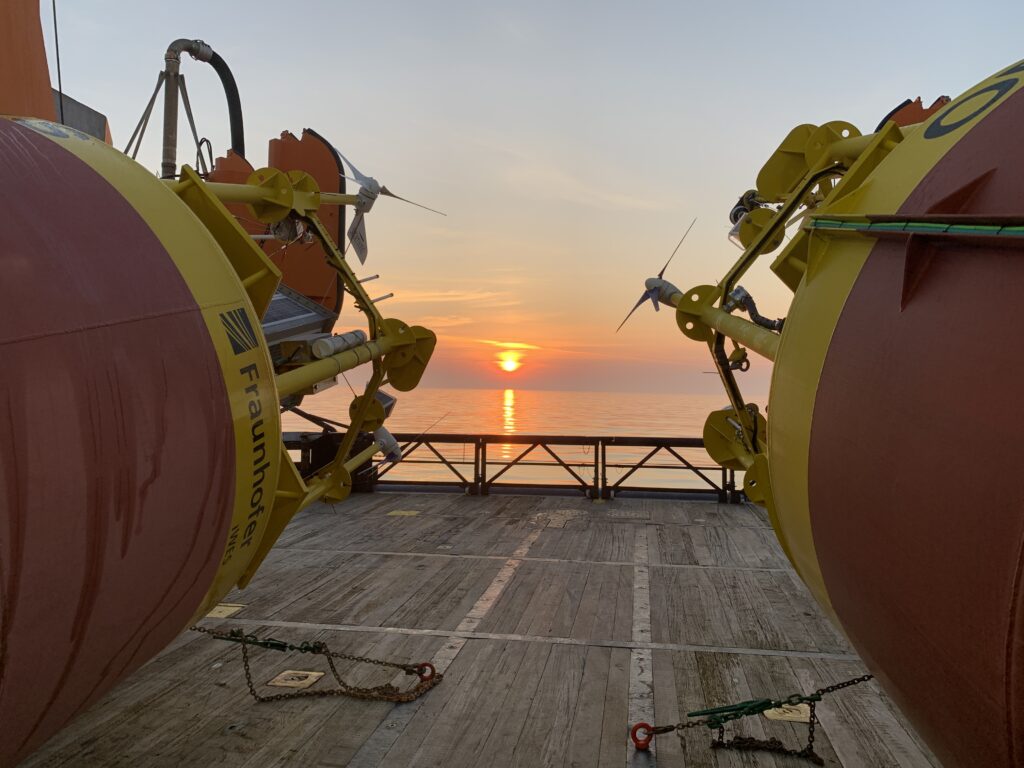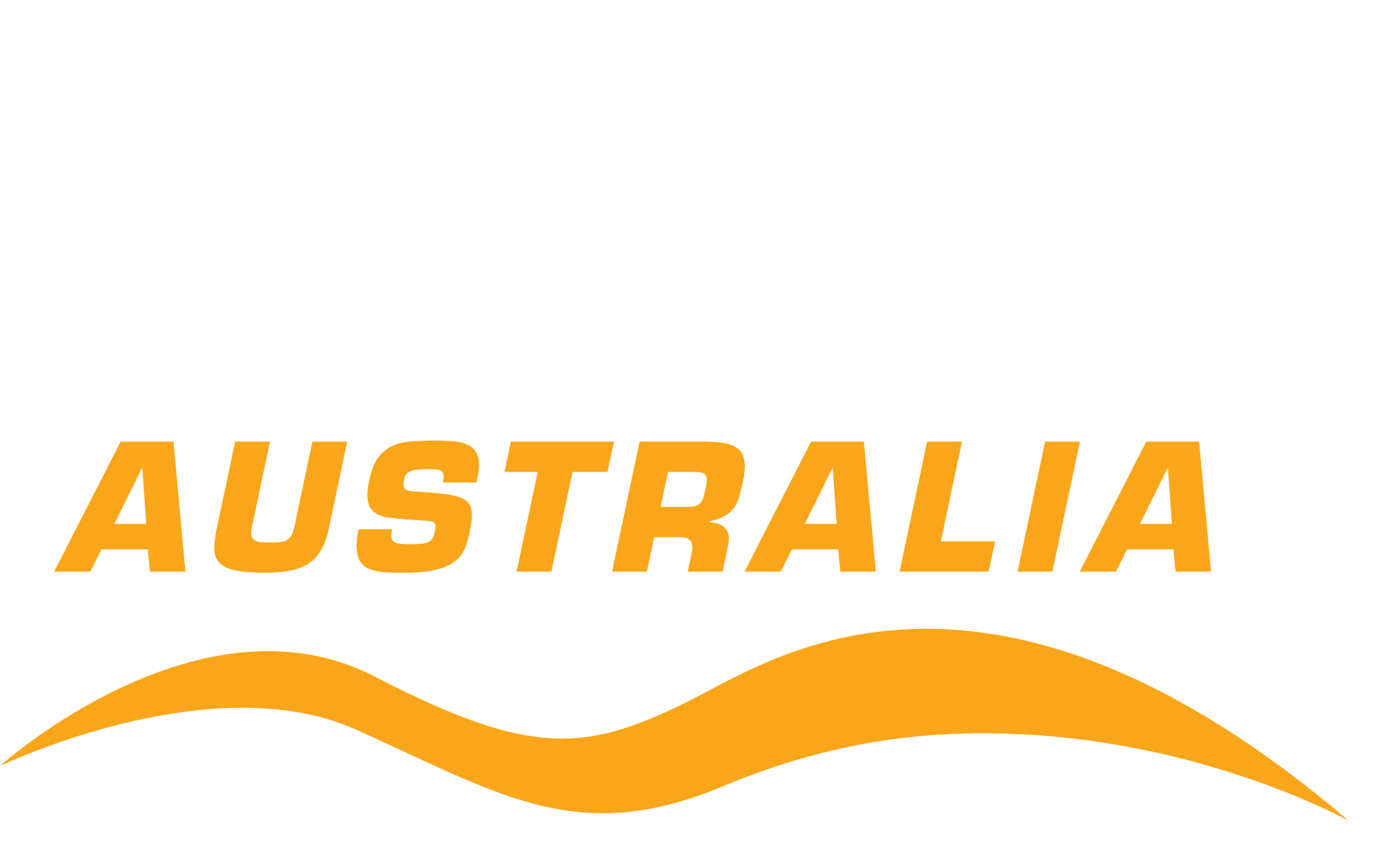Floating LiDAR
EGS AUSTRALIA AND FRAUNHOFER COLLABORATION AND JOINT VENTURE
EGS and Fraunhofer have established a collaborative agreement where EGS is the sole developer and supplier of Fraunhofer’s advanced Floating LiDAR technology in the APAC region. EGS is authorized to manufacture the technology in Australia, tailoring it to local conditions. EGS will handle the maintenance, deployment, and operation of the buoys, while Fraunhofer provides the technology, consultancy support, and experienced engineers for training and initial deployments. Additionally, Fraunhofer will assist with web hosting, data quality control, and data processing support, ensuring seamless integration and operation of the Floating LiDAR systems.

Fraunhofer IWES’ Floating Lidar solution

As one of the leading wind energy research institutes, Fraunhofer IWES has been working on floating lidar systems since 2009 and deployed its first prototype in 2013. Fraunhofer IWES operates its Wind Lidar Buoys in scientific projects and, since 2017, in commercial projects, delivering wind and metocean resource measurements and analysis.
The hull of the Wind Lidar Buoy is based on a German navigation buoy with a track record of 40 years, which was modified to accommodate a higher-grade power supply and specialized sensor payload. The lidar device is integrated in a fully encapsulating housing to protect it from the wave impact and briny environment. The compact, steel design of the FLS enables it to withstand severe sea states during storms and typhoons.
The power supply is redundant and intermeshed to ensure reliability from the micro wind turbines, the photovoltaic modules, and the backup generator. The energy storage is duplicated over three battery banks. All the power system elements are connected to a data communication system (BUS), which enables automated management based on real-time information. The FLS runs renewable energy sources; in case of exceptionally low input, the backup generator starts automatically. The generator has the capacity to run the buoy for 12 weeks on its own with eco-friendly GTL diesel fuel.
The Fraunhofer IWES Wind Lidar Buoy is typically equipped with either a ZX Lidars ZX300 or a Vaisala WindCube v2.1 lidar. Redundant meteorological sensors are fitted to the superstructure and oceanographic data is recorded with underwater-mounted sensors. The IWES engineering team can accommodate custom sensors flexibly to suit specific requirements. The FLS is monitored 365 days a year via web-based surveillance tools to ensure uninterrupted operation. All key statuses are frequently received and the data from the sensors – including compensated wind data – are transferred daily.
Fraunhofer IWES verifies lidar devices against 200 m met masts (IEC 61400-50-2). The assembled FLS is then typically deployed offshore for calibration against a met mast and fixed lidar. The North Sea FINO3 research platform is often used for this. Both Fraunhofer IWES FLS-Types achieved Stage-2 maturity of the Carbon Trust OWA Roadmap in 2016 / 2017. The ZX300 FLS-Type successfully attained the Roadmap’s Stage-3 commercial type maturity in March 2024.
Fraunhofer IWES offers not only customizable measurement campaign delivery but also cutting-edge data analysis, measurement concepts incl. multiple lidar devices of different types, and the possibility to include data modeling.
See more about Fraunhofer here: website.

